Cats are naturally drawn to patio furniture for several reasons. The warm surfaces, plush cushions, and high vantage points make these spots especially appealing for lounging and observing their surroundings. However, their presence on your outdoor furniture can lead to fur accumulation, scratches, and other messes, dampening your enjoyment of your outdoor space.
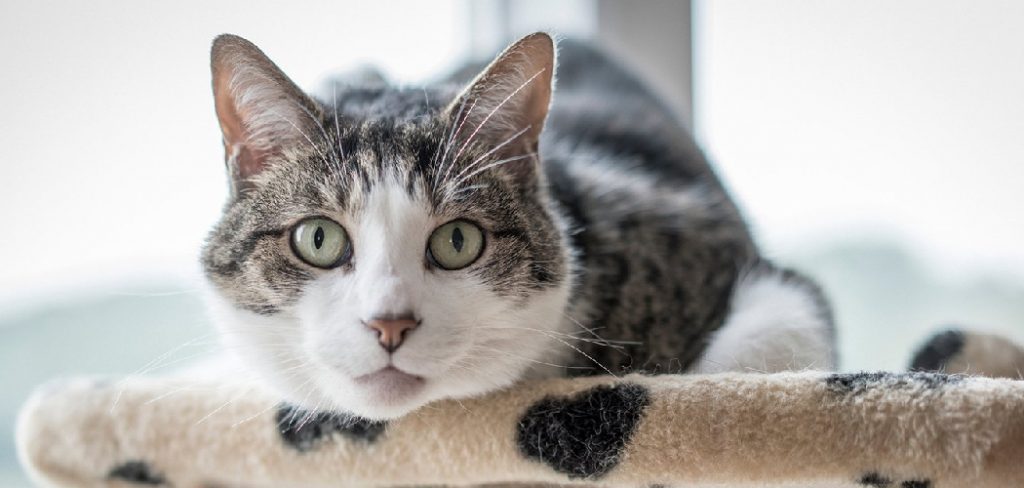
This guide provides practical and humane strategies on how to keep cats off patio furniture without harming your feline visitors or compromising your furniture’s condition. By implementing these methods consistently, you can strike a balance between a cat-friendly environment and maintaining your patio’s cleanliness and functionality. Whether you’re dealing with your own pets or neighborhood cats, this guide will help you find the best solutions to keep outdoor furniture protected while ensuring the well-being of the animals.
Using Scents That Repel Cats
Natural Repellents
One of the most effective and humane ways to deter cats from patio furniture is by using scents they dislike. Citrus peels, such as those from lemons or oranges, can be strategically placed on the furniture to create a natural barrier. Cats typically find the sharp smell of citrus unpleasant and will avoid areas where these scents linger. Additionally, a simple vinegar and water spray solution can be applied to cushions and surfaces. This method is not only safe for cats but also helps to keep your furniture fresh and clean. Reapply the solution periodically to maintain its effectiveness, especially after rain or regular use.
Commercial Cat Repellents
Another option to consider is commercial cat repellent sprays specifically designed to discourage cats while being safe and non-toxic. Look for products that use animal-friendly ingredients and follow the application instructions provided. Diluted essential oils such as eucalyptus or peppermint can also work well for those who prefer more natural solutions. However, it is crucial to properly dilute these oils to ensure they do not harm the animals, as undiluted oils can be toxic to cats. When used consistently, these commercial and natural repellent methods can effectively keep cats from lounging on your patio furniture without causing them harm.
How to Keep Cats Off Patio Furniture: Creating Physical Barriers
Step 1: Covering Furniture When Not in Use
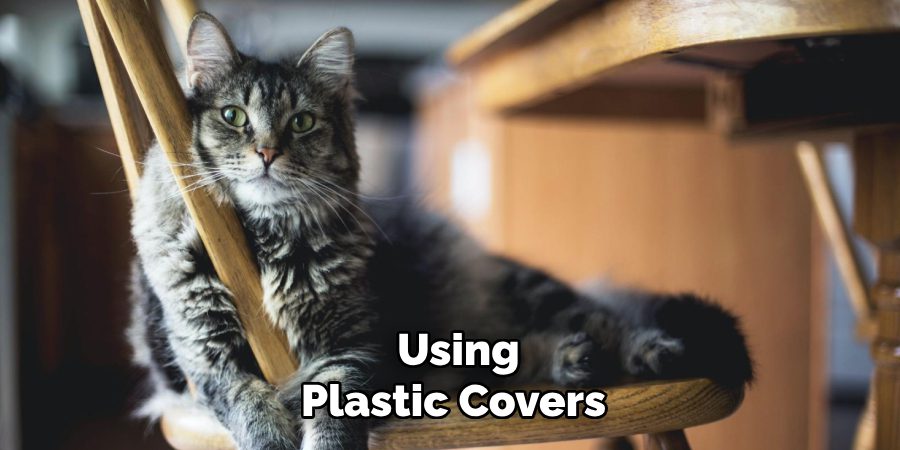
One of the simplest ways to protect your patio furniture is by covering it when it’s not in use. Using plastic covers, tarps, or fitted slipcovers can discourage cats from lounging as these materials create a less inviting surface. For an added deterrent, try using reflective or crinkly materials like aluminum foil, which cats tend to avoid due to their texture and noise. Ensure the covers are securely in place so they do not come off easily and expose the furniture. Not only does this method help to keep cats away, but it also protects your furniture from weather and dirt.
Step 2: Placing Obstacles on Surfaces
Another effective strategy to keep cats off your furniture is by placing obstacles on commonly used surfaces. Double-sided tape is a great option for the arms of chairs or cushions, as cats dislike the sticky texture against their paws. Alternatively, you can use spiky mats or place an upside-down carpet runner on the seats or tabletops to make the surfaces uncomfortable for lounging. These physical barriers do not harm the animals but gently discourage them from making your furniture their resting place. Combined with other methods, this approach can enhance your efforts to keep your patio cat-free.
How to Keep Cats Off Patio Furniture: Using Motion-Activated Deterrents
Step 1: Installing Motion-Activated Sprinklers
Motion-activated sprinklers are a safe and effective way to keep cats away from your outdoor patio. These devices spray a light burst of water whenever they detect movement nearby, startling the approaching cat and encouraging it to leave the area. The sudden water spray is harmless to the animal yet highly effective at deterring repeated visits. Position the sprinklers strategically around the perimeter of your patio or any areas where cats frequently roam for optimal results. Make sure the devices are set to cover the targeted zones with sufficient range to maximize effectiveness.
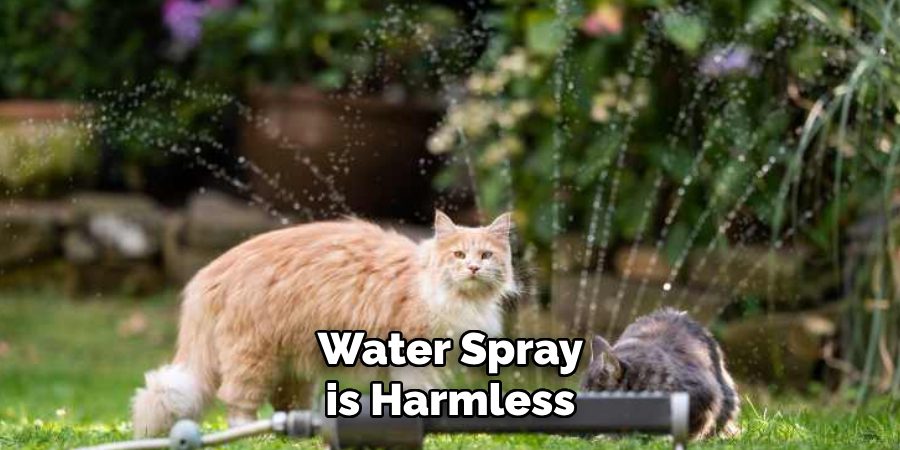
Step 2: Using Ultrasonic Cat Deterrents
Ultrasonic cat deterrents are another excellent option for keeping unwanted cats away from your patio. These devices emit high-frequency sounds that are unpleasant to cats but inaudible to humans. They work particularly well for stray or neighbor cats that wander onto your property, providing a non-invasive, hassle-free solution. Ultrasonic deterrents can be placed discreetly around your patio and require minimal maintenance, making them a convenient long-term option. Ensure the devices are positioned in areas where cats are likely to approach, such as garden entry points or close to furniture, for the best results.
Step 3: Trying Motion-Activated Air Sprays
Motion-activated air sprays are designed to release a harmless burst of air when triggered, effectively scaring cats away from patio areas. These sprays work particularly well near patio entrances or on specific outdoor furniture pieces. They are safe to use and do not harm the animals, making them an ethical choice for cat deterrence. Similar to other motion-activated solutions, placement is key—position the devices where cats frequently attempt to climb or rest. Combining air sprays with other deterrents can provide a comprehensive solution to keeping your patio free of feline visitors.
Making the Patio Less Appealing
Step 1: Removing Food and Water Sources
One of the simplest yet most effective ways to discourage cats from frequenting your patio is by eliminating any temptations such as food or water sources. Never leave pet food or water bowls outside, as these will attract cats and other wildlife. If you have bird feeders, ensure they are placed out of reach, preferably in an area far away from your patio. Cleaning up fallen birdseed is equally important, as it can draw the attention of curious cats. By diligently removing these attractions, you reduce the chances of cats lingering in your outdoor space.

Step 2: Providing Alternative Resting Spots
If the cat in question belongs to you, it is helpful to provide alternative comfortable resting areas to redirect their interest away from your patio furniture. Consider setting up a designated pet bed in a secluded area of your yard, away from outdoor furniture or high-traffic areas. A shaded cat house or outdoor shelter placed strategically in another corner of the yard can also offer an appealing retreat for your pet. When cats have their own cozy and inviting space, they are less likely to seek out your patio as their resting spot. This dual approach of removing incentives from your patio while offering attractive alternatives elsewhere creates a balanced solution to keep your outdoor space cat-free.
DIY Solutions to Keep Cats Away
If you’re looking for simple and cost-effective ways to discourage cats from invading your patio space, here are some practical DIY solutions:
1. Using Cayenne Pepper or Coffee Grounds
Sprinkling cayenne pepper or used coffee grounds around the legs of your furniture can act as a natural deterrent for cats. These scents are unpleasant to them and will help keep them away, all without causing harm. Be sure to reapply after rainfall to maintain effectiveness.
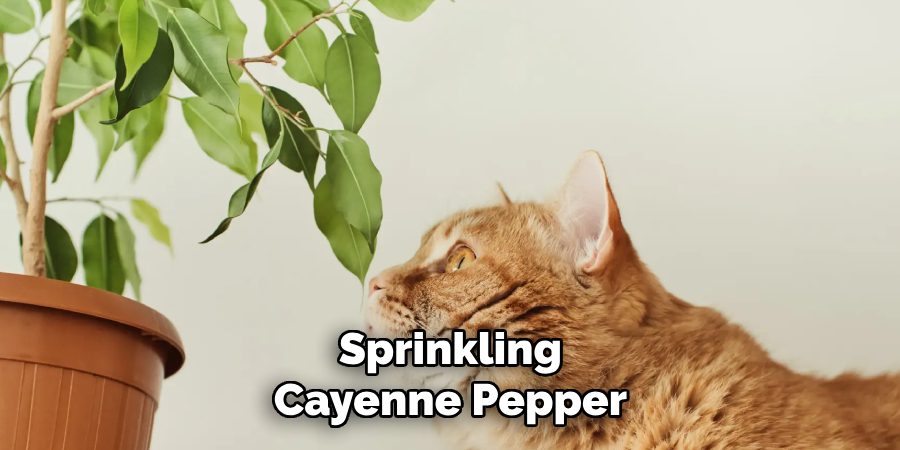
2. Hanging Wind Chimes or Reflective Objects
Cats are often startled by unpredictable noise and movement. Hanging wind chimes or reflective objects, such as old CDs or foil strips, around your patio can create an environment that cats find unsettling, prompting them to steer clear of the area.
3. Placing Plastic Mats or Chicken Wire Under Furniture
Uncomfortable textures can make potential resting spots significantly less appealing. Laying down plastic mats with small raised bumps or chicken wire underneath your patio furniture can discourage cats from lingering. These surfaces feel unpleasant to their paws, encouraging them to find a more comfortable area elsewhere.
These DIY methods are easy to implement and offer a humane way to keep your outdoor space cat-free, ensuring your patio remains a peaceful, enjoyable retreat.
Long-Term Training and Habits
Building long-term habits to discourage cats from entering specific areas of your patio requires consistency and patience. One effective method is to shoo cats away whenever they approach unwanted spots gently. Avoid using harsh methods, as they can stress or harm the animal. Instead, calmly guide the cat away from areas like patio furniture or plants you wish to protect. Over time, the consistent discouragement will help them associate these areas with being off-limits.
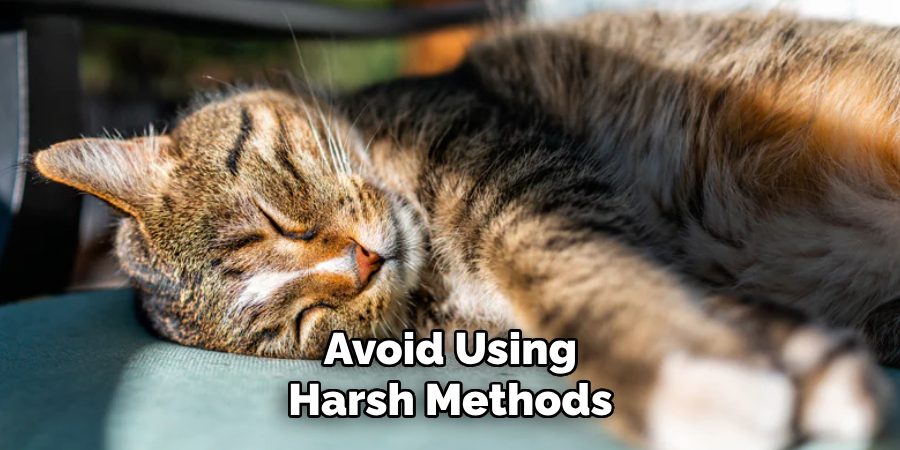
Additionally, rewarding good behavior can reinforce positive associations. For instance, consider providing a small treat or verbal praise if a cat stays away from your furniture or designated boundaries. Positive reinforcement can be a powerful tool to shape their behavior in an effective and humane way.
Provide alternative items like a designated outdoor scratching post or play area to redirect their attention further. Placing these in a quiet yard corner can give cats a satisfying alternative to climbing on or scratching your patio furniture. These proactive training and habit-building techniques practiced regularly, will help maintain a cat-free patio while ensuring a humane and respectful approach to managing their behavior.
Common Mistakes to Avoid
Using harmful deterrents like mothballs or toxic chemicals
One of the most significant mistakes is using harmful deterrents such as mothballs, ammonia, or other toxic substances. While these might seem like an easy solution to keep cats away, they can cause serious harm to both the cats and the surrounding environment. It’s important to opt for humane and pet-friendly alternatives that effectively discourage cats without risking their well-being.
Punishing cats instead of using positive redirection
Punishment can lead to fear, stress, and mistrust, which is counterproductive when trying to manage a cat’s behavior. Rather than scolding or physically disciplining a cat, focus on positive redirection techniques, as these encourage desired behavior without creating a negative relationship with the animal.
Leaving cushions uncovered, making them an inviting nap spot
Uncovered patio cushions can quickly become a cozy and tempting spot for cats. To avoid this, use protective covers or store your cushions when not in use. This small adjustment can help maintain the cleanliness of your furniture while discouraging visits from your feline friends.
Conclusion
Understanding how to keep cats off patio furniture involves implementing a variety of effective, humane deterrents. Using protective covers, incorporating scents that cats dislike, or offering alternative spaces for them to explore can make a significant difference. Consistency in applying these methods is key, as it helps reinforce the desired behavior over time. Remember, humane approaches not only protect your furniture but also ensure the well-being of your feline visitors. Don’t hesitate to experiment with different solutions to find what works best for your space and circumstances, ultimately fostering a peaceful coexistence with neighborhood cats.

Professional Focus
Oliver Wood, a passionate patio designer, specializes in creating comfortable and inviting outdoor spaces that enhance relaxation and entertainment. His work combines a deep understanding of design with a love for nature, making him a standout professional in the field of outdoor living spaces. Through his thoughtful approach, he transforms everyday patios into extraordinary retreats for family and friends.
About the Author
Oliver Wood, a skilled patio designer, shares his expertise on outdoor living through his designs and insights. With a background in patio design and a genuine passion for creating beautiful spaces, he encourages others to invest in their outdoor environments, enhancing their homes with functional and inviting spaces for relaxation and entertainment.
Education History
University: Virginia Union University
Oliver’s education equipped him with the knowledge and skills to design patios that merge aesthetics with comfort, transforming outdoor areas into beautiful extensions of the home.
Expertise:
- Patio Design and Outdoor Living Spaces
- Functional and Aesthetic Landscaping
- Comfortable and Inviting Outdoor Environments
- Design Philosophy for Family-Oriented Spaces
- Creating Spaces for Relaxation and Entertainment
